Design and Implementation of a Miniaturized Filtering Antenna for 5G Mid-Band Applications
Abstract
:1. Introduction
2. Related Works
3. Antenna Structure
4. Design Steps
4.1. Design of CLL-Based Filter
4.2. Design of Filtering Antenna
5. Parametric Study
6. Measurement Results
7. Conclusions
Author Contributions
Funding
Conflicts of Interest
References
- Balanis, C.A. Antenna Theory: Analysis and Design; John Wiley and Sons: Hoboken, NJ, USA, 2016. [Google Scholar]
- Gayatri, T.; Anveshkumar, N.; Sharma, V.K. A Hexagon Slotted Circular Monopole UWB Antenna for Cognitive Radio Applications. In Proceedings of the 2020 International Conference on Emerging Trends in Information Technology and Engineering (ic-ETITE), Vellore, India, 24–25 February 2020; pp. 1–5. [Google Scholar]
- Kantemur, A.; Tak, J.; Siyari, P.; Abdelrahman, A.H.; Krunz, M.; Xin, H. A Novel Compact Reconfigurable Broadband Antenna for Cognitive Radio Applications. IEEE Trans. Antennas Propag. 2020, 68, 6538–6547. [Google Scholar] [CrossRef]
- Ali, S.H.; Reja, A.H.; Hachim, Y.A. Design a Compact Coplanar Wideband Antenna Used in Radio Frequency Identification Systems. Iraqi J. Electr. Electron. Eng. 2020. [Google Scholar] [CrossRef]
- Dong, Y.; Wang, Z.; Pan, Y.; Choi, J.H. Characterization of Shorted Dipole Antennas for Low-Cost RFID Reader Applications. IEEE Trans. Antennas Propag. 2020, 68, 7297–7308. [Google Scholar] [CrossRef]
- Madina, R.; Rahardjo, E.T.; Zulkifli, F.Y. Multiband Wideband Monopole Antena Using RSRR for WLAN and WiMAX Applications. In Proceedings of the 2019 IEEE R10 Humanitarian Technology Conference (R10-HTC) (47129), Depok, West Java, Indonesia, 12–14 November 2019; pp. 16–18. [Google Scholar]
- Mkindu, H.; Iddi, H. Multi-Bands Circular Ring Monopole Antenna with Double L-Shape for WLAN/WiMAX Applications. Tanzan. J. Sci. 2021, 47, 228–242. [Google Scholar]
- Alnahwi, F.M.; Al-Yasir, Y.I.A.; Ali, N.T.; Gharbia, I.; See, C.H.; Abd-Alhameed, R.A. A Compact Wideband Circularly Polarized Planar Monopole Antenna with Axial Ratio Bandwidth Entirely Encompassing the Antenna Bandwidth. IEEE Access 2022, 10, 81828–81835. [Google Scholar] [CrossRef]
- Djengomemgoto, G.; Altunok, R.; Karabacak, C.; Imeci, S.T.; Durak, T. Dual-band Gemini-shaped Microstrip Patch Antenna for C-band and X-band applications. In Proceedings of the 2017 International Applied Computational Electromagnetics Society Symposium—Italy (ACES), Firenze, Italy, 26–30 March 2017; pp. 1–2. [Google Scholar]
- Alnahwi, F.M.; Al-Yasir, Y.I.A.; See, C.H.; Abd-Alhameed, R.A. Single-Element and MIMO Circularly Polarized Microstrip Antennas with Negligible Back Radiation for 5G Mid-Band Handsets. Sensors 2022, 22, 3067. [Google Scholar] [CrossRef]
- Zeng, J.; Luk, K.-M. Single-Layered Broadband Magnetoelectric Dipole Antenna for New 5G Application. IEEE Antennas Wirel. Propag. Lett. 2019, 18, 911–915. [Google Scholar] [CrossRef]
- Alnahwi, F.M.; Al-Yasir, Y.I.A.; Abdulhameed, A.A.; Abdullah, A.S.; Abd-Alhameed, R.A. A Low-Cost Microwave Filter with Improved Passband and Stopband Characteristics Using Stub Loaded Multiple Mode Resonator for 5G Mid-Band Applications. Electronics 2021, 10, 450. [Google Scholar] [CrossRef]
- Al-Yasir, Y.; Tu, Y.; Ojaroudi Parchin, N.; Abdulkhaleq, A.; Alnahwi, F.; Abd-Alhameed, R. Dual-Wide Band Stub Loaded Step Impedance Resonator Filter with Folded Meander Couple Lines. In Proceedings of the 1st International Multi-Disciplinary Conference Theme: Sustainable Development and Smart Planning, IMDC-SDSP 2020, Cyperspace, 28–30 June 2020. [Google Scholar]
- Lin, S.-C.; Chiou, P.-Y.; Chen, Y.-M.; Chang, S.-F. An Accurate Filtenna Synthesis Approach Based on Load-Resistance Flattening and Impedance-Transforming Tapped-Feed Techniques. IEEE Access 2018, 6, 24568–24581. [Google Scholar] [CrossRef]
- Ono, S.; Wada, K. Design and Fabrication of 3-Pole BPF Configured by Hairpin Resonators and Different Types of Coupling and Feed Types at 20 GHz. In Proceedings of the 2018 Asia-Pacific Microwave Conference (APMC), Kyoto, Japan, 6–9 November 2018; pp. 1363–1365. [Google Scholar]
- Gomez-Garcia, R.; Yang, L.; Munoz-Ferreras, J.-M.; Psychogiou, D. Selectivity-Enhancement Technique for Stepped-Impedance-Resonator Dual-Passband Filters. IEEE Microw. Wirel. Compon. Lett. 2019, 29, 453–455. [Google Scholar] [CrossRef]
- Wen, P.; Ma, Z.; Liu, H.; Zhu, S.; Ohira, M.; Wang, C.; Guan, X.; Ren, B. Novel Compact Dual-Band BPF Using Stub-Loaded Shorted Stepped-Impedance Resonators. In Proceedings of the 2018 Asia-Pacific Microwave Conference (APMC), Kyoto, Japan, 6–9 November 2018; pp. 22–24. [Google Scholar]
- Dakhli, S.; Smari, M.; Choubani, F.; Floch, J.-M. Microstrip Stop-band RF Filter at Microwave Frequencies Using CLLs Elements. In Proceedings of the 2020 4th International Conference on Advanced Systems and Emergent Technologies (IC_ASET), Hammamet, Tunisia, 15–18 December 2020; pp. 306–309. [Google Scholar]
- Tang, M.-C.; Chen, Y.; Ziolkowski, R.W. Experimentally Validated, Planar, Wideband, Electrically Small, Monopole Filtennas Based on Capacitively Loaded Loop Resonators. IEEE Trans. Antennas Propag. 2016, 64, 3353–3360. [Google Scholar] [CrossRef] [Green Version]
- Wei-Jun, W.; Ying-Zeng, Y.; Shao-Li, Z.; Zhi-Ya, Z.; Jiao-Jiao, X. A New Compact Filter-Antenna for Modern Wireless Communication Systems. IEEE Antennas Wirel. Propag. Lett. 2011, 10, 1131–1134. [Google Scholar] [CrossRef]
- Hasan, Y.M.; Abdullah, A.S.; Alnahwi, F.M. Dual-Port Filtenna System for Interweave Cognitive Radio Applications. Iran. J. Sci. Technol. Trans. Electr. Eng. 2022. [Google Scholar] [CrossRef]
- Atallah, H.A.; Abdel-Rahman, A.B.; Yoshitomi, K.; Pokharel, R.K. Compact frequency reconfigurable filtennas using varactor loaded T-shaped and H-shaped resonators for cognitive radio applications. IET Microw. Antennas Propag. 2016, 10, 991–1001. [Google Scholar] [CrossRef]
- Yun, J.; Trinh-Van, S.; Park, J.-Y.; Yang, Y.; Lee, K.-Y.; Hwang, K.C. Cavity-Backed Patch Filtenna for Harmonic Suppression. IEEE Access 2020, 8, 221580–221589. [Google Scholar] [CrossRef]
- Wang, W.; Jin, H.; Yu, W.; Zhang, X.H.; Wu, F.; Chin, K.-S.; Luo, G.Q. A Single-Layer Dual-Circularly Polarized SIW-Cavity-Backed Patch Filtenna with Wide Axial-Ratio Bandwidth. IEEE Antennas Wirel. Propag. Lett. 2021, 20, 908–912. [Google Scholar] [CrossRef]
- Benassi, F.; Paolini, G.; Masotti, D.; Costanzo, A. A Wearable Flexible Energy-Autonomous Filtenna for Ethanol Detection at 2.45 GHz. IEEE Trans. Microw. Theory Tech. 2021, 69, 4093–4106. [Google Scholar] [CrossRef]
- Mohamadzade, B.; Simorangkir, R.B.V.B.; Hashmi, R.M.; Chao-Oger, Y.; Zhadobov, M.; Sauleau, R. A Conformal Band-Notched Ultrawideband Antenna with Monopole-Like Radiation Characteristics. IEEE Antennas Wirel. Propag. Lett. 2020, 19, 203–207. [Google Scholar] [CrossRef]
- Hasan, Y.M.; Abdullah, A.S.; Alnahwi, F.M. UWB Filtenna with Reconfigurable and Sharp Dual-Band Notches for Underlay Cognitive Radio Applications. Prog. Electromagn. Res. C 2022, 120, 45–60. [Google Scholar] [CrossRef]
- Chen, C. A Compact Wideband Endfire Filtering Antenna Inspired by a Uniplanar Microstrip Antenna. IEEE Antennas Wirel. Propag. Lett. 2022, 21, 853–857. [Google Scholar] [CrossRef]
- El Ouadi, Z.; Amadid, J.; Khabba, A.; El Yassini, A.; Ibnyaich, S.; Zeroual, A. Compact Microstrip Filtenna Designed for Wireless Local Area Network Applications. In Proceedings of the 2022 International Conference on Decision Aid Sciences and Applications (DASA), Chiangrai, Thailand, 23–25 March 2022; pp. 1593–1597. [Google Scholar]
- T, K.; Lalitha, S.K. Defected Ground Structure Implementation for Slotted Annular Ring Microstrip Filtenna. In Proceedings of the 2022 2nd International Conference on Intelligent Technologies (CONIT), Hubli, India, 24–26 June 2022; pp. 1–4. [Google Scholar]
- Turkeli, A.; Gorur, A.K.; Altuncu, Y. Design of a Novel Dual-Wideband Filtenna. In Proceedings of the 2022 Microwave Mediterranean Symposium (MMS), Pizzo Calabro, Italy, 9–13 May 2022; pp. 1–4. [Google Scholar]
- Meyer, E.; Vertegaal, C.; Johnson, L.; Meyer, P.; Johannsen, U. Substrate Integrated Waveguide Pedestal Filtenna for Sub-6 GHz 5G Radio Frequency Front-Ends. In Proceedings of the 2022 16th European Conference on Antennas and Propagation (EuCAP), Madrid, Spain, 27 March–1 April 2022; pp. 1–5. [Google Scholar]
- CST Studio Suite. CST Microwave Studio Suite; Dassault Systèmes UK: Coventry, UK, 2014. [Google Scholar]
- Pozar, D.M. Microwave Engineering; John Wiley & Sons: Hoboken, NJ, USA, 2011. [Google Scholar]
- Garg, R.; Bahl, I.; Bozzi, M. Microstrip Lines and Slotlines; Artech House: London, UK, 2013. [Google Scholar]


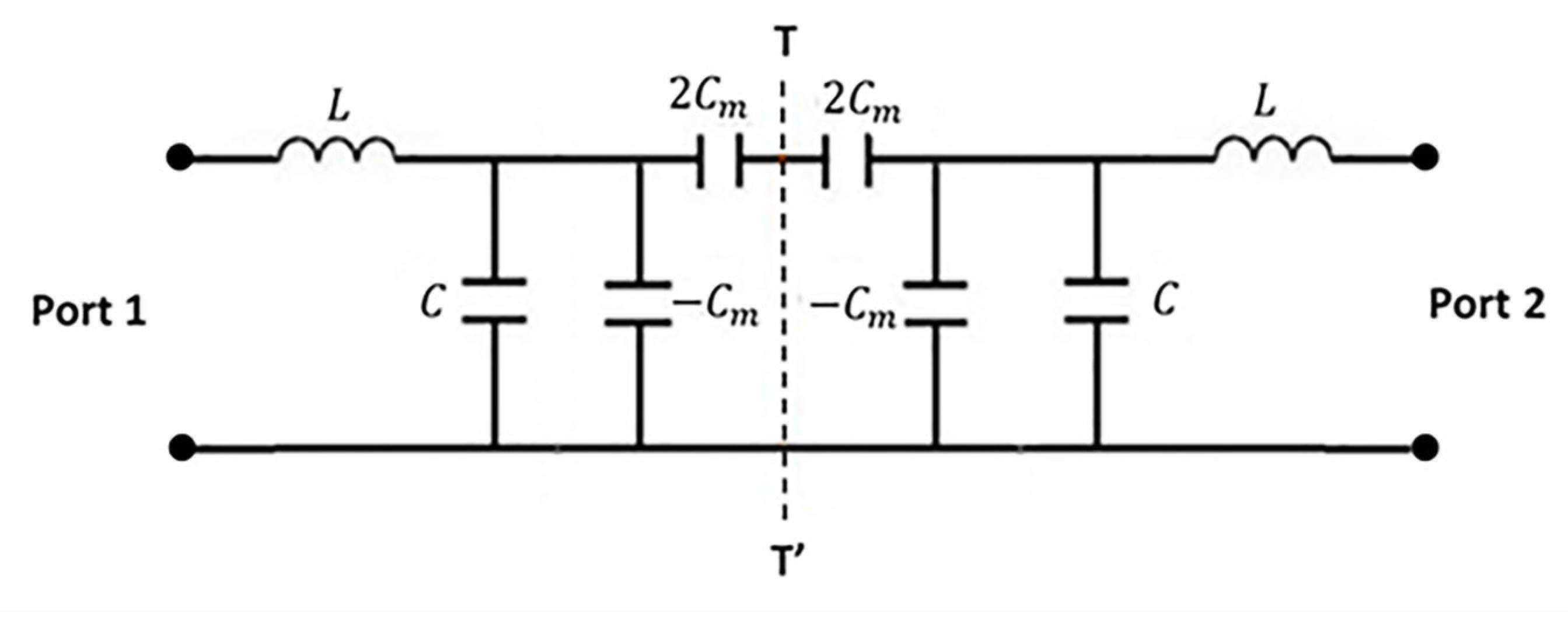
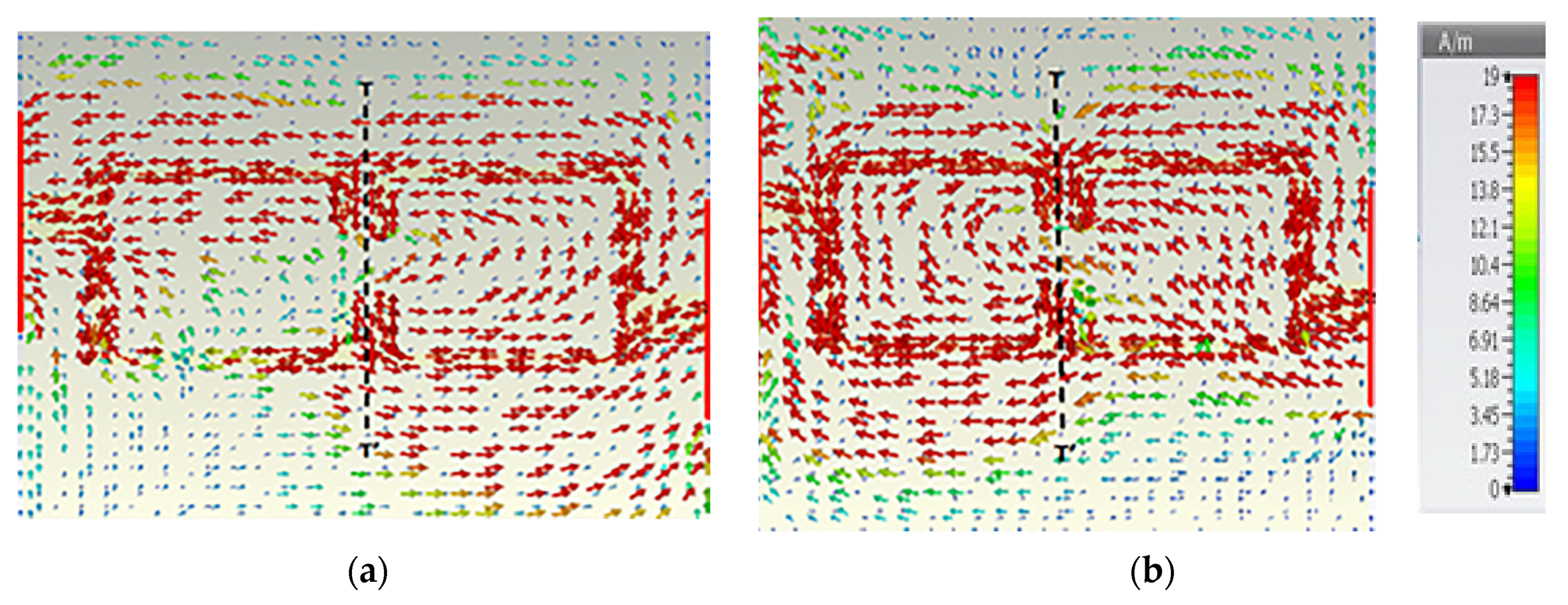

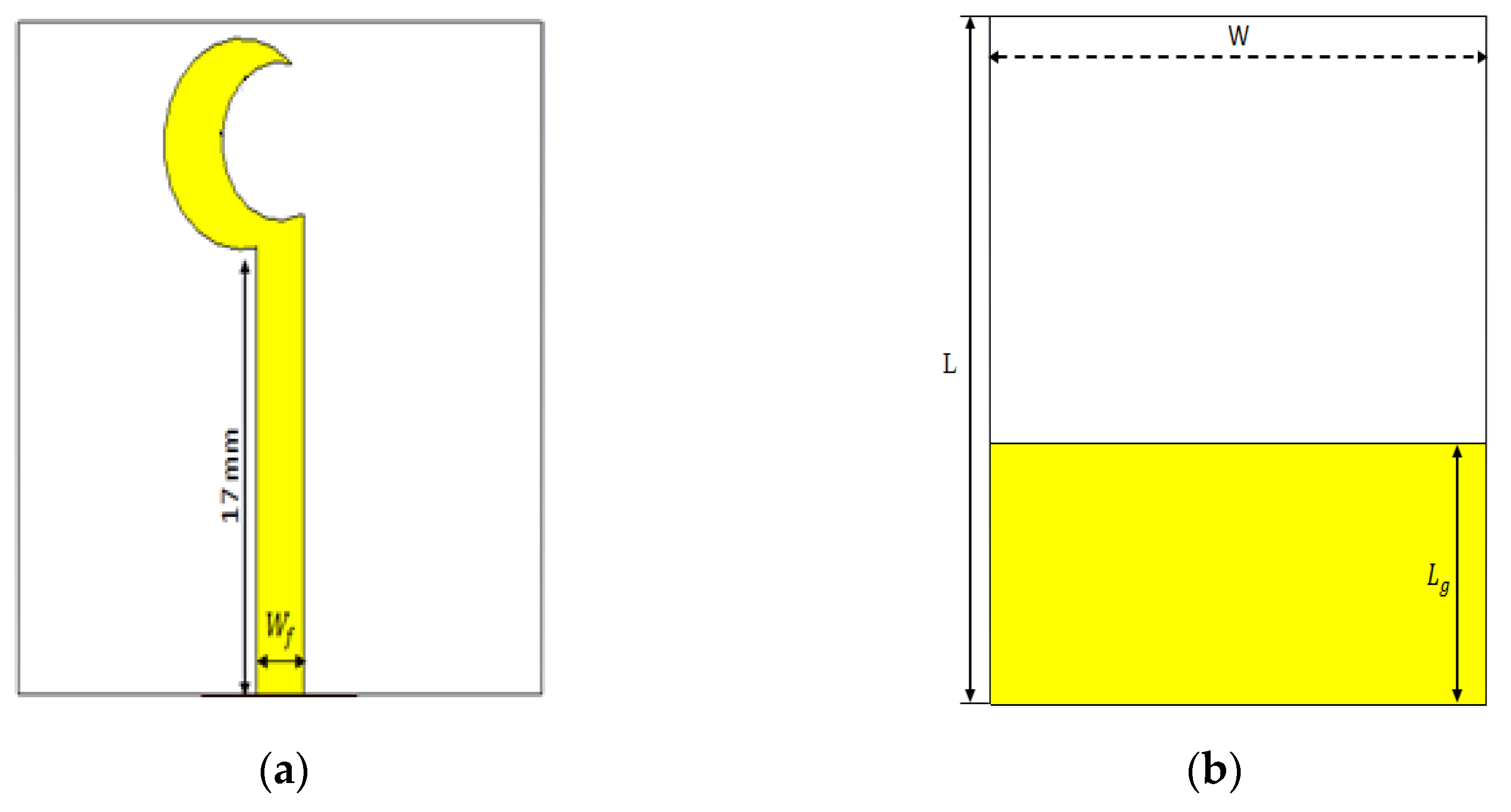

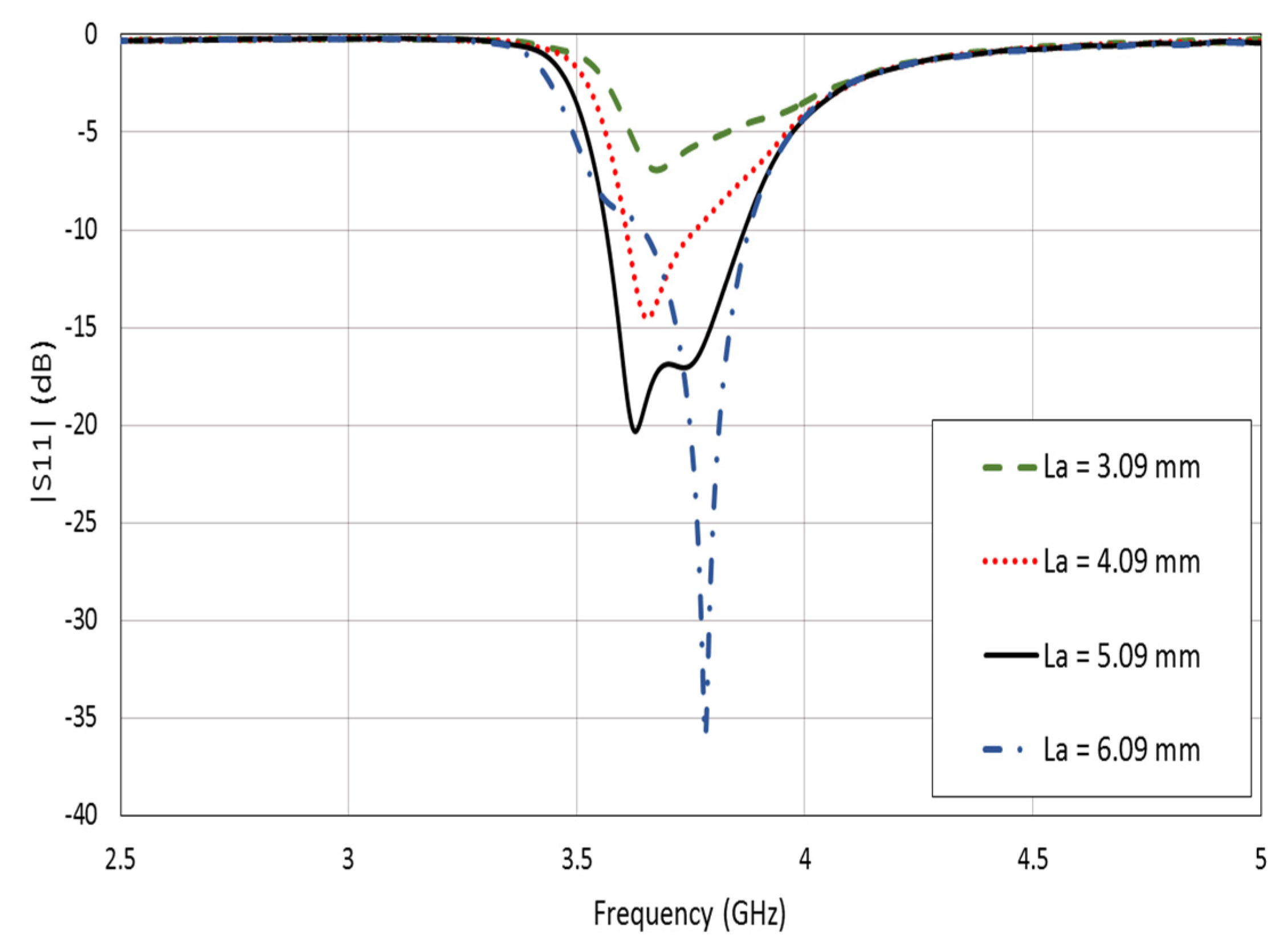


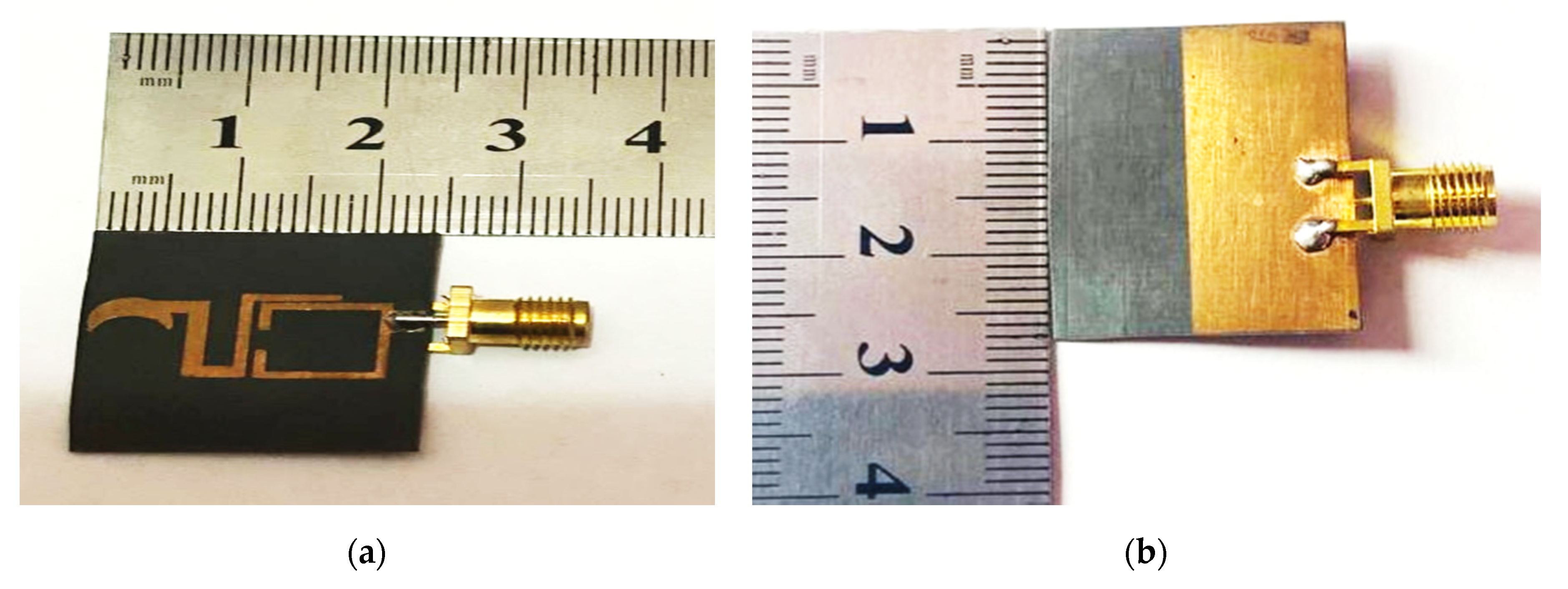

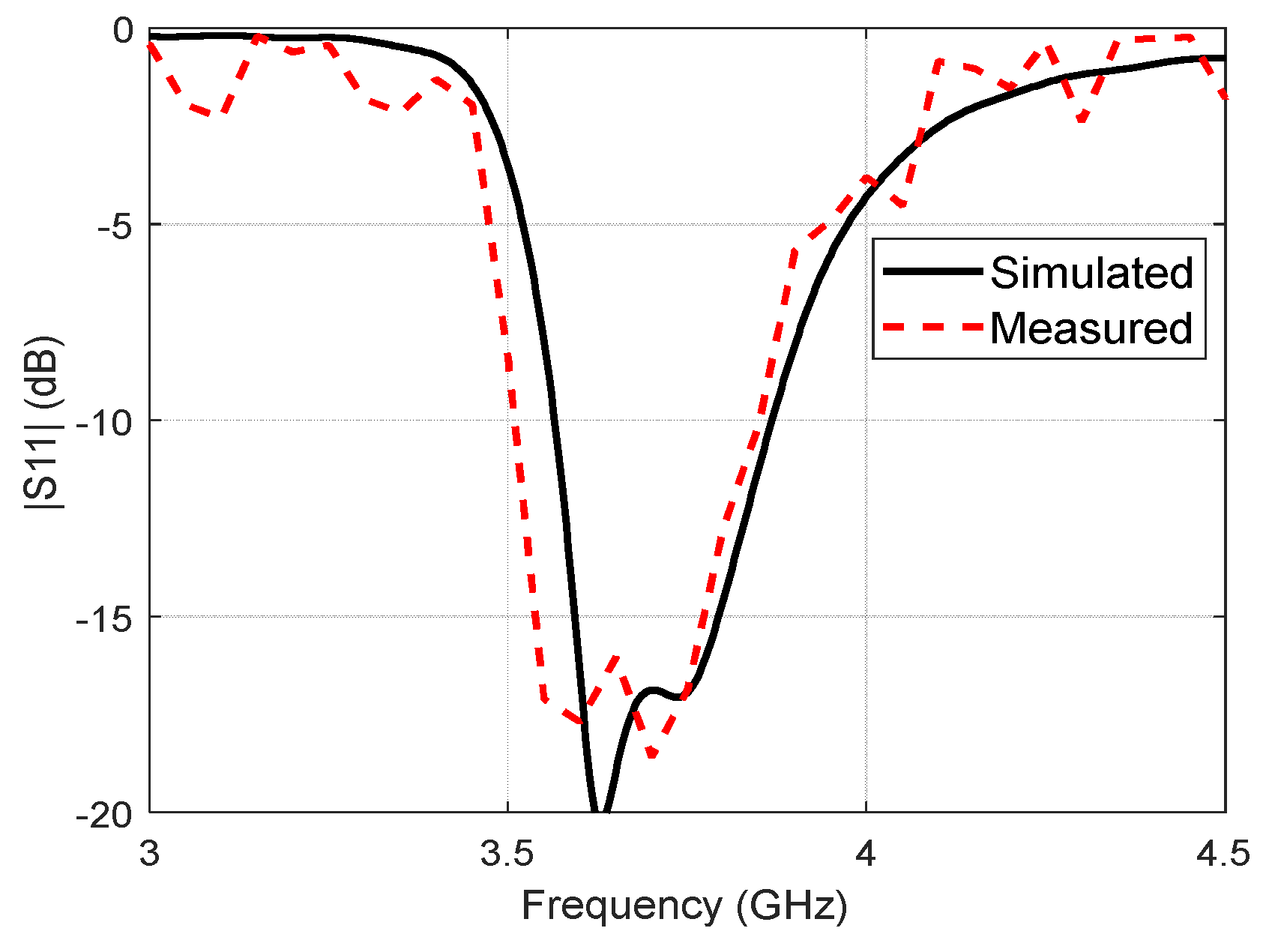


| Parameter | Dimension (mm) | Parameter | Dimension (mm) |
|---|---|---|---|
| 24.2 | 2.49 | ||
| W | 27 | 1.2 | |
| 13 | 3.05 | ||
| 2.4 | 5.09 | ||
| R | 3 | d | 3.8 |
| 3 | 0.7 | ||
| 3.6 | 1 | ||
| 0.6 | 2.8 | ||
| 8.09 | 9 |
Publisher’s Note: MDPI stays neutral with regard to jurisdictional claims in published maps and institutional affiliations. |
© 2022 by the authors. Licensee MDPI, Basel, Switzerland. This article is an open access article distributed under the terms and conditions of the Creative Commons Attribution (CC BY) license (https://creativecommons.org/licenses/by/4.0/).
Share and Cite
Juma’a, F.K.; Al-Mayoof, A.I.; Abdulhameed, A.A.; Alnahwi, F.M.; Al-Yasir, Y.I.A.; Abd-Alhameed, R.A. Design and Implementation of a Miniaturized Filtering Antenna for 5G Mid-Band Applications. Electronics 2022, 11, 2979. https://doi.org/10.3390/electronics11192979
Juma’a FK, Al-Mayoof AI, Abdulhameed AA, Alnahwi FM, Al-Yasir YIA, Abd-Alhameed RA. Design and Implementation of a Miniaturized Filtering Antenna for 5G Mid-Band Applications. Electronics. 2022; 11(19):2979. https://doi.org/10.3390/electronics11192979
Chicago/Turabian StyleJuma’a, Fatimah K., Alaa I. Al-Mayoof, Abdulghafor A. Abdulhameed, Falih M. Alnahwi, Yasir I. A. Al-Yasir, and Raed A. Abd-Alhameed. 2022. "Design and Implementation of a Miniaturized Filtering Antenna for 5G Mid-Band Applications" Electronics 11, no. 19: 2979. https://doi.org/10.3390/electronics11192979










